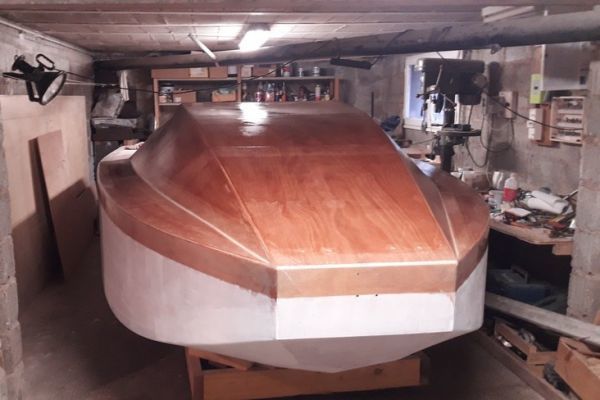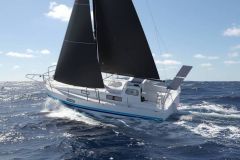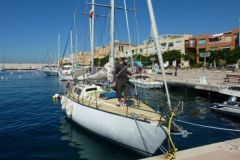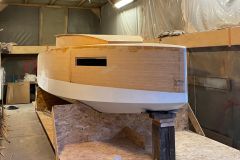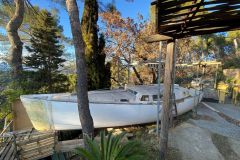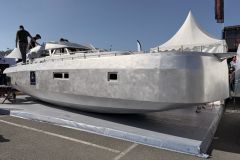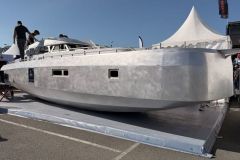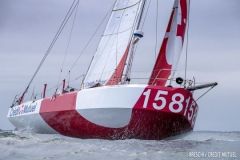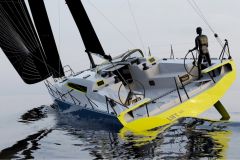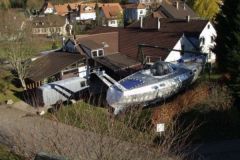Based in North Brittany, Hubert is an experienced yachtsman who sails an Astus 16.5 based in Plestin-les-Grèves. Sailing on a stretch of water that opens up at low tide, the idea of a new boat, better suited to a coastal program with bivouac, was born in 2020.
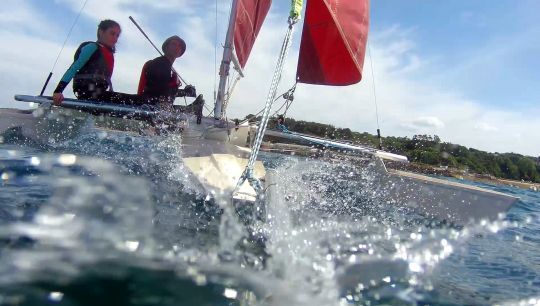
He imagined and designed the TabascoW V5, the fruit of five years' sailing and reflection on the trimaran's qualities and limits.
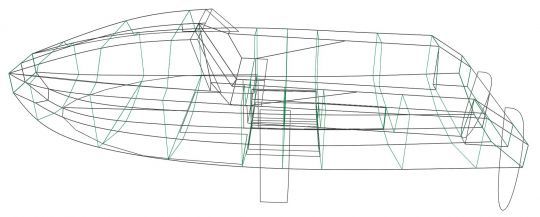
A coastal scow concept adapted to Brittany
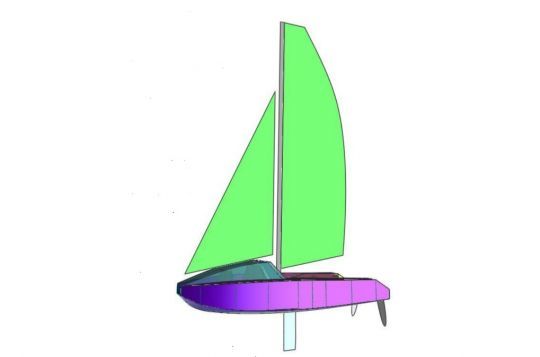
With its taut lines, moderate rocker hull and width of 2.16 m for a length of 4.96 m, it is inspired by the Mini 6.50 and Class 40. The bare hull weighs 260 to 280 kg, with an estimated displacement of 450 kg. The stated objective: planning from 6 to 7 knots, 10 knots without spinnaker, up to 14 knots in the surf. Built in cp-epoxy, it can take 3 to 4 crew.
In-house architecture and mature construction
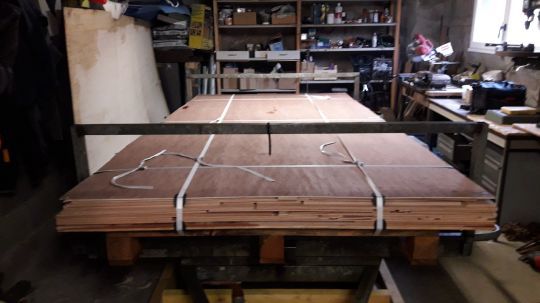
Hubert himself carried out every stage of the construction of this innovative scow, while naval architect Jérome Delaunay contributed his knowledge for the stability calculations required for division 245:
"I finalized the plans in early 2024 and began its construction in March 2024, and now I'm getting to the painting stage." he explains.
Imagining every detail with intelligence, he fine-tuned his plans. To keep the displacement very light, each part was designed to have several functions. The mast is taken from an SL 15.5, and the Hobie Cat rudders are operated by a single tiller, as in a Mini.
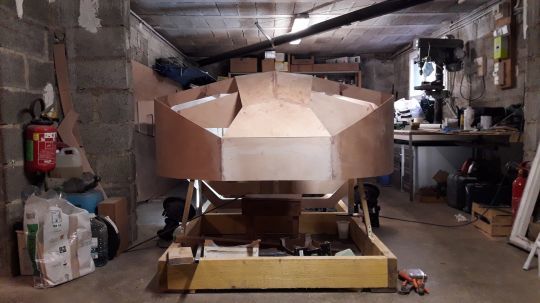
The hull is reinforced with triangulated carbon mesh, and the chainplates are digitally cut.
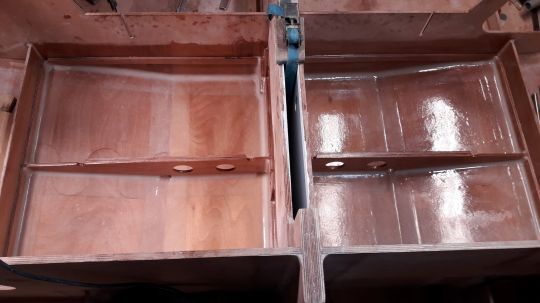
Construction costs are in the region of ?12,000, including all materials, rigging, engine and road trailer.
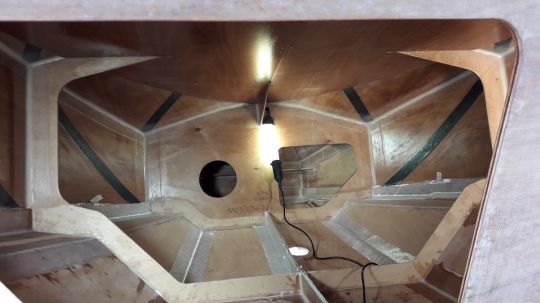
Ballasts, deck fittings and cruising equipment
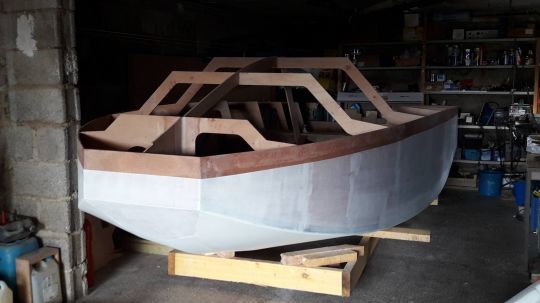
The scow incorporates 2x50 liters main ballast tanks located below the waterline, and designed to be filled at all times, especially without sails on beached anchorages, high centerboard. They fill by themselves when the boat is in the water, and empty on trailer or grounded.
It also features two additional 60L ballats above the waterline, but below the vertical center of gravity. These are used either for storage or to increase sailing stability.
Finally, this dinghy is designed to carry 4x10L fresh/sea water tanks as required, wedged under the cockpit on the sole, (and also located under the vertical center of gravity) and on the longitudinal reinforcements of the hull bottom in
back of the ballasts.
A 50 kg pivoting centerboard, a draft of 15 cm to 1.15 m, and an air draft limited to 1.9 m on trailer complete the specification sheet.
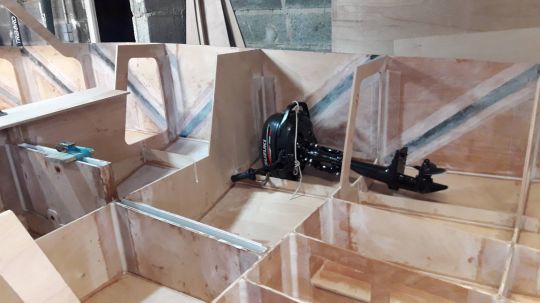
Transport, launching and autonomy
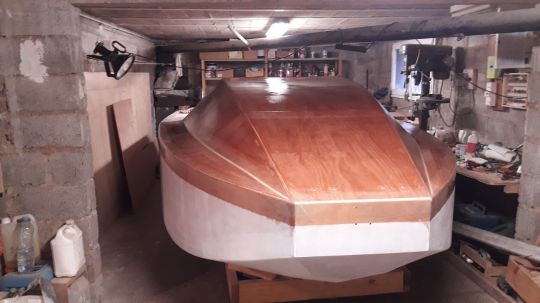
The TabascoW V5 can be towed by a compact car, with a gross vehicle weight of less than 500 kg, and fits through standard garage doors (1.75 x 2.40 m). It is launched in the same way as a RIB. It is designed for a two-person bivouac on 4 m2. The 2.5 m cockpit, foamed compartments, separate lockers and up to 4 hp engine reinforce its coastal vocation.
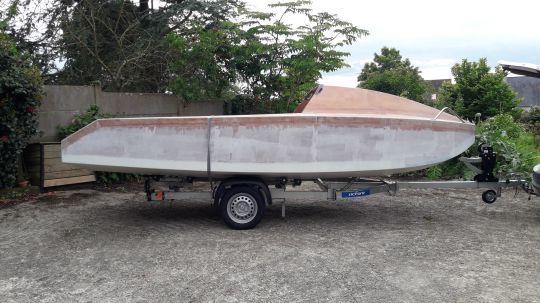
A philosophy of reuse and shared plans
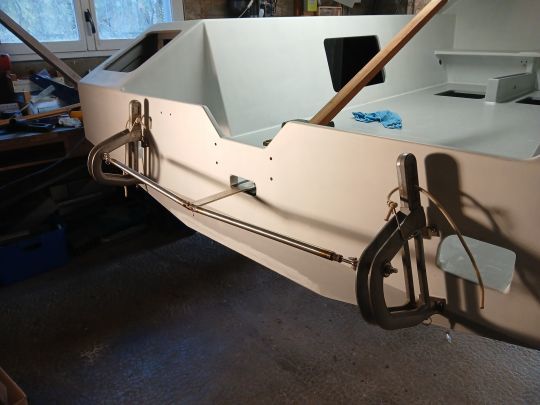
Designed with no commercial objective in mind, this prototype was registered with the French Maritime Affairs Authority after the completion of a twenty-page technical file. Once the first trials have been validated, probably at the end of the summer, Hubert will make available the plans for this little scow, with the hope of building up a small fleet around Brittany.
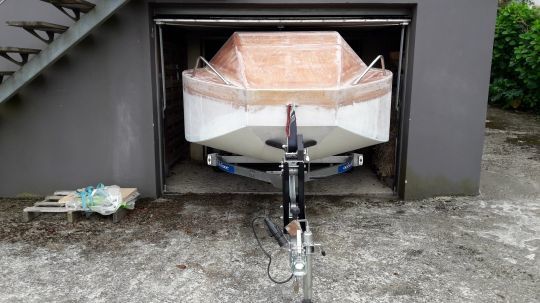
TabascoW V5 embodies a project where nautical culture, field know-how and a passion for coastal sailing meet. An inspiring approach for do-it-yourself sailors and thoughtful boaters alike.

 /
/ 